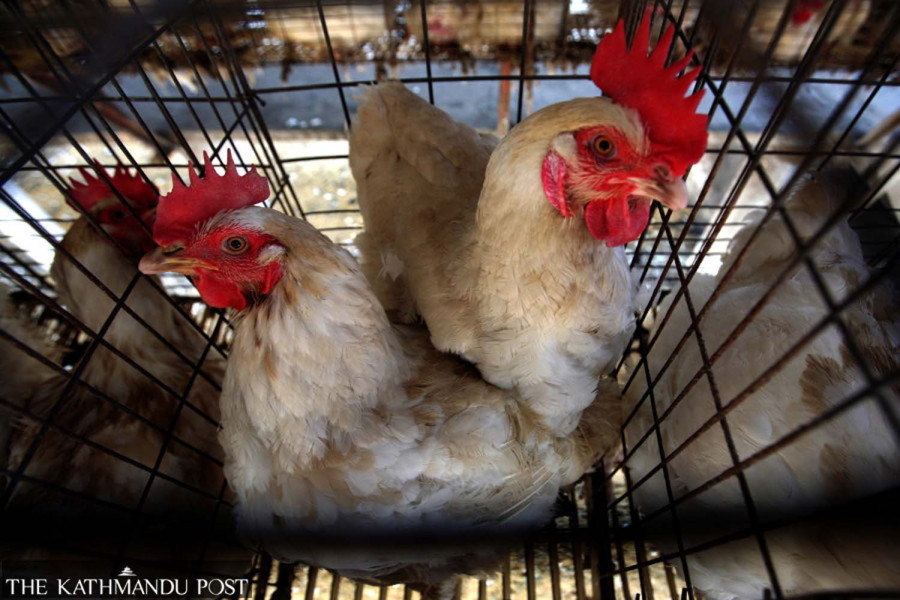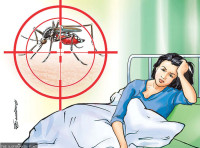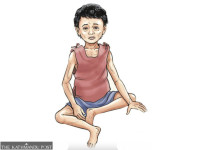Health
Bird flu outbreak confirmed in Sunsari. Surveillance stepped up
447 fowls culled, 200-metre perimeter sealed off at affected farm in ward 6 of Koshi Rural Municipality.
Post Report
With the confirmation of the outbreak of A(H5N1), also known as the bird flu virus, in local fowls in ward 6 of Koshi Rural Municipality in Sunsari district, veterinary authorities have stepped up surveillance measures.
Spread of a deadly virus was confirmed on Monday by the Central Veterinary Laboratory under the Department of Livestock Services, where testing of samples of dead fowls was carried out. It is the first avian flu outbreak of 2025.
Following the confirmation of the outbreak of the avian influenza virus, technicians deployed from the district culled 447 fowls—including 443 ducks, two chickens, and two pigeons. They also destroyed 10 kg of poultry feed and manure.
“The farm has been disinfected, and a 200-metre perimeter around the outbreak site has been sealed,” said Dr Sudhir Kumar Singh, information officer at the department. “Veterinary officials have been alerted to step up surveillance measures in the district.”
H5N1 is a lethal bird flu virus strain that is highly pathogenic. The virus was first detected in birds in 2009 in Nepal, and since then, the country has witnessed disease outbreaks almost every year.
Singh suggested that migratory birds coming to Nepal to escape the harsh winter may have transmitted the virus to local birds, which later spread in a local poultry farm. Thousands of migratory birds from the frozen regions of the northern hemisphere come to Nepal every year to escape the extreme cold and find food.
“We have instructed veterinary officials to collect samples from dead fowls and send them for lab testing,” said Singh. “Poultry farmers and those directly involved in handling poultry must take precautions against the risk of infection.”
Nepal had previously reported a human death from the virus in 2019. A 21-year-old man from Kavrepalanchok district, who worked as a truck driver transporting poultry, died of a respiratory infection while undergoing treatment. The World Health Organisation (WHO) Collaborating Centre for Influenza in Japan confirmed an infection of A(H5N1) in him after his death.
The first A(H5N1) infection was reported in 1997 in Hong Kong and the virus has since spread to Asia, Africa, Middle East and Europe and other parts of the world, causing millions of poultry infections.
Although rare, confirmed human cases for bird flu, reported by the WHO from 2003 to November 25 last year, total 868 with 457 deaths—with a case fatality rate of 53 percent. According to the UN body, almost all cases of H5N1 infection have been linked to close contact with infected live or dead fowls or contaminated environments.
Nepal witnessed a massive bird flu outbreak in 2022 that saw outbreaks in 15 districts. Over 600,000 fowls were culled at the time. Hundreds of farmers who were involved in poultry farming gave up the profession due to the outbreak and the apathy of authorities to provide compensation.
Experts warn that there is also a risk of the infected poultry reaching the market, as farmers may sell their fowls to minimise losses. They have urged the authorities to take the affected farmers into confidence and provide compensation at the earliest.
“Those handling the poultry must maintain hygiene, including hand hygiene, and use personal protective equipment—gloves and masks,” said Dr Sher Bahadur Pun, chief of the Clinical Research Unit at Sukraraj Tropical and Infectious Disease Hospital. “Others should also take precautionary measures while handling the chickens and poultry products.”
Meanwhile, veterinary officials say they will also alert the World Organisation for Animal Health about the outbreak. As a member of the organisation, the country has an obligation to report disease outbreaks.




 8.12°C Kathmandu
8.12°C Kathmandu













